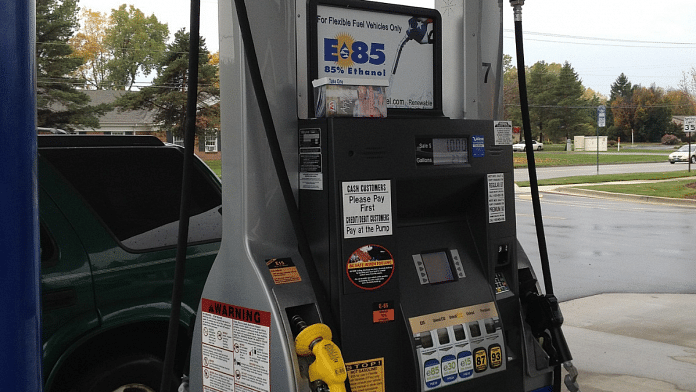Despite many issues being raised on the viability of food grain-sourced ethanol to achieve 20 per cent blending with petrol by 2025, particularly concerning food security and water scarcity, the Narendra Modi government is determined to push through with the plan. Currently, most petrol available across pumps in India is the ‘E10’ variety—a blend of the fuel with about 5 to 10 per cent ethanol.
The Modi government wants to increase the amount of ethanol-blending in petrol to the ‘E20’ level which will have between 15-20 per cent ethanol blended in the fuel, even advancing the cut-off date for that implementation to 2025 from 2030. This is in a bid to reduce India’s dependence on imported crude oil, which is a problem since India imports 85 per cent of its crude oil.
There is also talk of India moving to the E85 blend of ethanol-doped petrol (rather petrol-doped ethanol), the number being self-explanatory—an 80 to 90 per cent blend of ethanol with petrol. In Brazil, this is the fuel used in many vehicles, powered by the nation’s huge sugarcane crop.
There are some serious questions being asked on ethanol blending, and the push by the government has seen stocks of sugar mills and alcohol companies rise, but valid concerns remain about food supplies being diverted to ethanol production, particularly as a food crisis looms globally. At the same time, the investments required by oil companies to maintain multiple supply chains for numerous fuels will increasingly become an issue. And it isn’t just your liver that alcohol corrodes, but also rubber and plastic parts inside the engine.
But what does a higher proportion of ethanol mean for you as a car owner? We asked C.V Raman, chief technical officer, Maruti-Suzuki, to find out more.
Also read: Santro, the car that launched Hyundai in India, drives into the sunset. But shed no tears
Is ethanol less efficient than petrol?
First and foremost, ethanol by its chemical composition has lower energy per unit volume than petrol. Thus, fuel efficiency from any ethanol-blended petrol is less than that of ‘pure’ petrol. For example, E20 petrol will have a fuel efficiency of 5 to 7 per cent less than undoped petrol. A vehicle running on pure ethanol will deliver a fuel economy 30 to 35 per cent less than a pure petrol vehicle. There should be a discount on such blends at the pump to bring parity to the customer to compensate for the increased running costs.
Can today’s vehicles accept the E20 blend?
For E10 fuel, the Society of Indian Automobile Manufacturers (SIAM), had set up fuel material compatibility countermeasures for all vehicles from model year 2008. So, all vehicles sold in India after 2008 can take E10 fuel without any difficulty. However, current E10 compatible vehicles cannot take more than a 10 per cent blend as there are material compatibility concerns with parts that come in contact with fuel. There are design and material changes required to adapt to E20 fuel but the industry is working to implement E20 material compatibility for new vehicles from April 2023 onwards. There will be changes in hoses and gaskets but the investments required are not substantial.
Also read: Here’s how practical Honda City e:HEV can be in helping Indians escape high fuel prices
And what about E85 ‘Flex-Fuel’, what sort of work will that take?
For those engines, the development work will be substantial and it will be like developing a new engine. One will require a new engine architecture and engine management system. Critical components like the fuel pump, injectors, throttle body, piston rings and the fuel tank will be required to be changed. A new cold-start system will have to be developed so that the engine can start at lower ambient temperatures and with higher blends. The investments will be substantial and parts suppliers and manufacturers will need to start investing in new production facilities. The research and development efforts will require at least three years of engineering and validation efforts.
@kushanmitra is an automotive journalist based in New Delhi. Views are personal.
(Edited by Zoya Bhatti)






